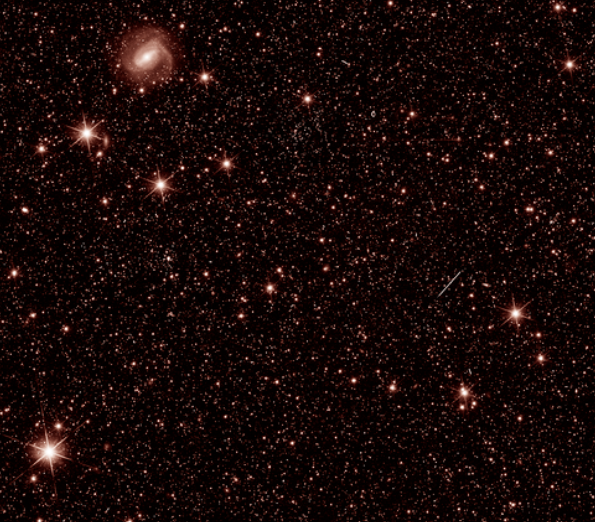The European Space Agency's (ESA) Euclid Space Telescope has snapped spellbinding images of the vast cosmos which shows a lot of galaxy structures deep within the "Hidden Galaxy," Perseus constellation, and more clusters.
Monumental Day for Euclid Space Mission

ESA's Euclid mission leaders proudly presented these groundbreaking images at the ESA Space Operations Centre in Darmstadt, Germany. Carole Mundell, Head of ESA's science program, introduced these images, marking an iconic day in the world of space exploration.
Euclid stands as a testament to its potential in scrutinizing the vast structure of the universe. ESA Director General Josef Aschbacher expressed eagerness about the insights Euclid will bring, particularly its role in unraveling the mysteries of dark matter and dark energy.
10 Billion Years of Cosmic Showcase
According to Wired, the recent images represent only the tip of the iceberg in Euclid's mission. Over the next decade, the telescope will embark on an extraordinary journey, surveying billions of galaxies like the ones in these images.
Euclid scientists will scrutinize over 15,000 square degrees of the sky, gazing back in time over 10 billion years of cosmic history. These collective photos will offer unprecedented three-dimensional vistas spanning the majority of the universe's existence.
Related Article : NASA's James Webb Space Telescope Determines How Far the Earth Is From 200 Galaxies
Perseus Cluster: A Gravity Ballet
The image of the Perseus cluster illustrates Euclid's capabilities. Held together by the cluster's gravity and the enigmatic dark matter particles, over 200 galaxies form a cosmic ballet. This cluster is part of a larger supercluster housing about 1,000 galaxies, akin to an extended galactic family.
The background of the image teems with tens of thousands of additional galaxies, demonstrating Euclid's capacity to simultaneously survey numerous celestial bodies.
Hidden Galaxy Revealed
Euclid's prowess extends to revealing galaxies hidden from optical telescopes. The image of IC 342, known as the "Hidden Galaxy," showcases the benefits of an infrared perspective. It unveils the galaxy's stars and dust with remarkable clarity, even though it hides behind the Milky Way's dust that obscures visible light.
Irregular Beauty of Dwarf Galaxies
Euclid showcases galaxies in diverse forms, like the irregularly structured NGC 6822. These dwarf galaxies, over eons, serve as the building blocks for larger galaxies, enriching our understanding of the universe's evolution.
Globular Clusters: Stellar Collections
Globular clusters, like NGC 6397, consist of hundreds of thousands of stars bound by gravity. While galaxies contain dark matter, these clusters do not. NGC 6397, located around 7,800 light-years away, is the second-closest globular cluster to Earth.
Captivating the Iconic Horsehead Nebula
The Horsehead Nebula, a celestial favorite, is another jewel in Euclid's collection. Euclid's two images of this magnificent stellar nursery align with those captured by NASA's James Webb Space Telescope and Hubble.
Mapping Dark Matter Structures
According to Space.com, Euclid will facilitate the development of expansive, high-resolution maps of dark matter structures, surpassing the ESA's Planck space telescope.
Astrophysicists will leverage Euclid's galaxy catalogs, employing statistical tools and weak gravitational lensing to investigate how foreground dark matter distorts the shapes of background galaxies.
Astrophysicist Michael Seiffert, the project scientist for NASA's contribution to Euclid, anticipates a wealth of data for years to come.
Euclid's resolution, three to five times sharper than ground-based telescopes, will offer an abundance of insights. Although its image resolution may not rival the JWST's, Euclid's ability to swiftly survey vast areas sets it apart.
The Journey Ahead the Euclid Team
The Euclid team is now focused on further instrument calibration, with the science mission slated to commence in January. By 2024, they will release data covering the first 50 square degrees of their survey, followed by the first year's data. These milestones

ⓒ 2025 TECHTIMES.com All rights reserved. Do not reproduce without permission.




